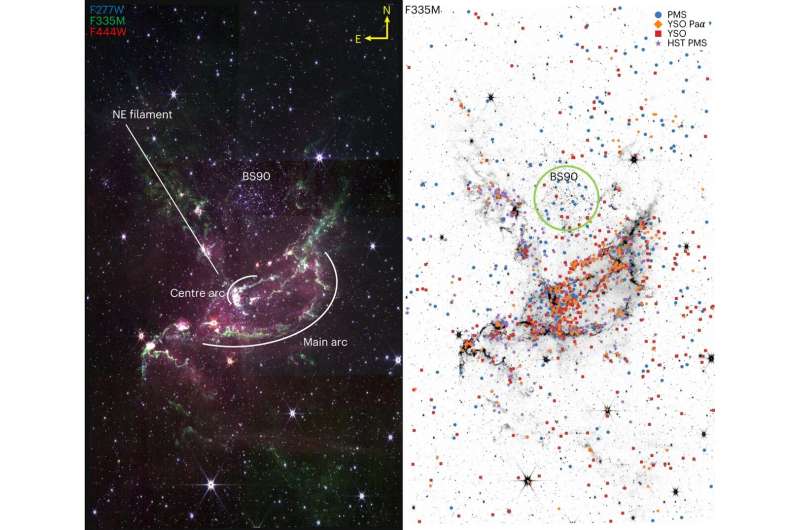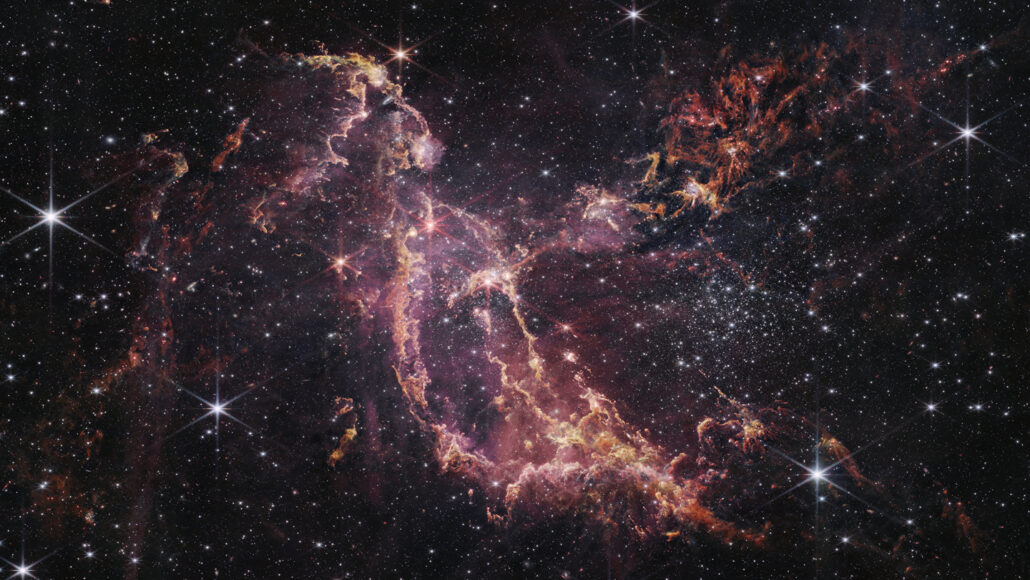
An international team of space scientists has found evidence suggesting that planets could have formed during the so-called “cosmic noon.” In their study, reported in the journal Nature Astronomy, the group used data from the James Webb Space Telescope (JWST) to study a part of the Small Magellanic Cloud (SMC) to learn more about planet development around young stars.

For many years, astronomers have been studying planet creation and the likelihood of the existence of planets similar to Earth. But it is still not clear how planets could have could come to exist in the early universe when most, if not all of the stars, were small. In this new effort, the research team focused on a part of the night sky known as the SMC, a dwarf galaxy not too far from the Milky Way. More specifically, they focused their attention on a part of the SMC called NGC 346, because it is made up of hundreds of young, low-mass stars. They wanted to know if planets were forming there. To find out, they turned to data from the JWST.

Prior research has shown that planets form via accretion of materials from and around a star. But researchers have believed that that the materials also need to be the right kind, such as aluminum, silicon and iron. Such materials are thought to be in short supply around small, young stars, suggesting that planets are unlikely to form around them.
To learn more, the team used infrared data from JWST, which can see through the dust clouds that typically surround small, young developing stars. They found that past assumptions are wrong. The data revealed evidence of rock-forming elements in the SMC, despite the lack of metals—elements that are similar to materials found in galaxies that are much farther away. Such materials are believed to represent a period in the universe known as “cosmic noon,” when huge numbers of stars were forming all across the universe. And that suggests that many planets may have been forming around them at that time.








